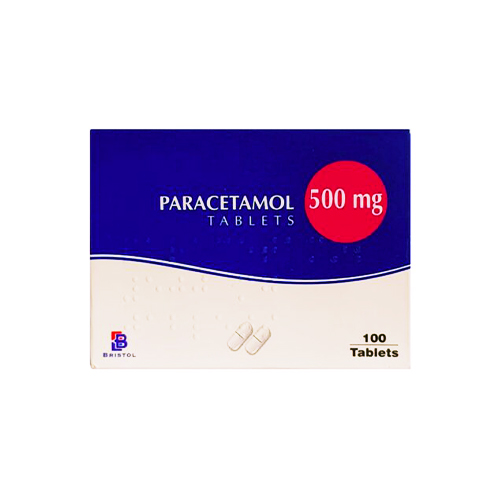- Anti-fever & pain relief
- Lasts up to 4 hours
- High tolerability
Paracetamol
Paracetamol tablets belong to a group of medicines called Analgesics and Antipyretics. It works by relieving pain and reducing high temperatures.
What is Paracetamol?
Paracetamol (acetaminophen) is a pain reliever and a fever reducer.
Paracetamol is used to treat many conditions such as headache, muscle aches, arthritis, backache, toothaches, colds, and fevers. Paracetamol is gentle on the stomach, it is fast-acting providing effective pain relief when you need it.
Before taking Paracetamol
Do not use this medication if you are allergic to acetaminophen or paracetamol.
Have liver disease or a history of alcoholism.
Before using paracetamol, tell your doctor if you are pregnant.
This medication can pass into breast milk and may harm a nursing baby. Do not use paracetamol without telling your doctor if you are breastfeeding a baby.
Store paracetamol at room temperature away from heat and moisture. The rectal suppositories can be stored at room temperature or in the refrigerator.
Important information
Do not use more of this medication than is recommended. An overdose of paracetamol can cause serious harm. The maximum amount of paracetamol for adults is 1 gram (1000 mg) per dose and 4 grams (4000 mg) per day.
Taking more paracetamol could cause damage to your liver.
Before using paracetamol, tell your doctor if you have liver disease or a history of alcoholism.
Do not use any other over-the-counter cough, cold, allergy, or pain medication without first asking your doctor or pharmacist.
Paracetamol is contained in many combination medicines. If you use certain products together you may accidentally use too much paracetamol.
Read the label of any other medicine you are using to see if it contains paracetamol, acetaminophen or APAP.
Avoid drinking alcohol while taking this medication. Alcohol may increase your risk of liver damage while taking paracetamol.
How to use Paracetamol
Paracetamol dosing information
Usual Adult Paracetamol Dose for Fever:
- Paracetamol 500mg tablets: Two 500 mg tablets orally every 4 to 6 hours
Usual Adult Paracetamol Dose for Pain:
- Paracetamol 500mg tablets: Two 500 mg tablets orally every 4 to 6 hours
What happens if I overdose?
Seek emergency medical attention if you think you have used too much of this medicine.
The first signs of paracetamol overdose include loss of appetite, nausea, vomiting, stomach pain, sweating, and confusion or weakness.
Later symptoms may include pain in your upper stomach, dark urine, and yellowing of your skin or the whites of your eyes.
Side effects & precautions
Do not use any other over-the-counter cough, cold, allergy, or pain medication without first asking your doctor or pharmacist. Paracetamol is contained in many combination medicines.
If you use certain products together you may accidentally use too much paracetamol. Read the label of any other medicine you are using to see if it contains paracetamol, acetaminophen or APAP.
Avoid drinking alcohol while taking this medication. Alcohol may increase your risk of liver damage while taking paracetamol.
Side-effects
Get emergency medical help if you have any of these signs of an allergic reaction to paracetamol: hives, difficulty breathing, swelling of your face, lips, tongue, or throat.
Stop using this medication and call your doctor at once if you have a serious side effects such as:
- Low fever
- Nausea
- Stomach pain
- Loss of appetite
- Dark urine
- Clay-coloured stools
- Jaundice (yellowing of the skin or eyes)
Further information can be obtained from the attached patient information leaflet available to download.
Documentation
Paracetamol Patient Information Leaflet (PIL)



We’re here to help.
Our friendly team is available to help Monday to Friday 9:00am - 5:00pm.
If you need urgent assistance, do not use this service. Call 111, or in an emergency call 999.

